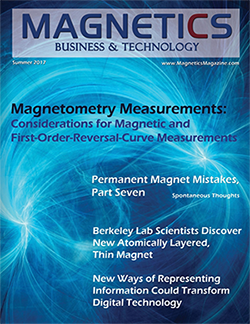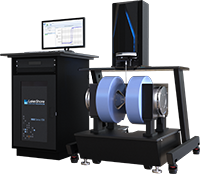 There are three important considerations when selecting a magnetometry measurement technique that is best suited for a material: sensitivity, speed, and temperature or field range over which the measurement will be made. The feature article in the latest issue of Magnetics Business & Technology magazine was written by Lake Shore Senior Scientist Brad Dodrill. In it, he compares magnetic material characterization techniques and presents typical electromagnet-based VSM measurement results in regard to these considerations.
There are three important considerations when selecting a magnetometry measurement technique that is best suited for a material: sensitivity, speed, and temperature or field range over which the measurement will be made. The feature article in the latest issue of Magnetics Business & Technology magazine was written by Lake Shore Senior Scientist Brad Dodrill. In it, he compares magnetic material characterization techniques and presents typical electromagnet-based VSM measurement results in regard to these considerations.
One technique that provides more information than a simple hysteresis loop is first-order reversal curve, or FORC, measurements. FORCs are acquired by saturating a sample in a field, decreasing the field to a reversal field, and then sweeping the field back to saturation in a series of steps. The process is repeated for many reversal field values, resulting in a series of FORCs. This data can then be analyzed and plotted in 2D or 3D FORC diagrams that provide information regarding magnetic interactions and coercivity distributions.
 A typical series of FORC measurements can contain thousands of data points, making the speed of the measurement a critical factor. The Lake Shore 8600 Series VSM has been developed to make extremely fast measurements; hysteresis loops can be recorded in seconds and FORCs in minutes.
A typical series of FORC measurements can contain thousands of data points, making the speed of the measurement a critical factor. The Lake Shore 8600 Series VSM has been developed to make extremely fast measurements; hysteresis loops can be recorded in seconds and FORCs in minutes.
The 8600 series also has a moment sensitivity of 25 nemu at room temperature, can generate fields to 3.26 T, and operate over a temperature range of 4.2 K to 1273 K. Along with its redeveloped, ergonomic interface and powerful software features, the 8600 will help you do more science in less time.

